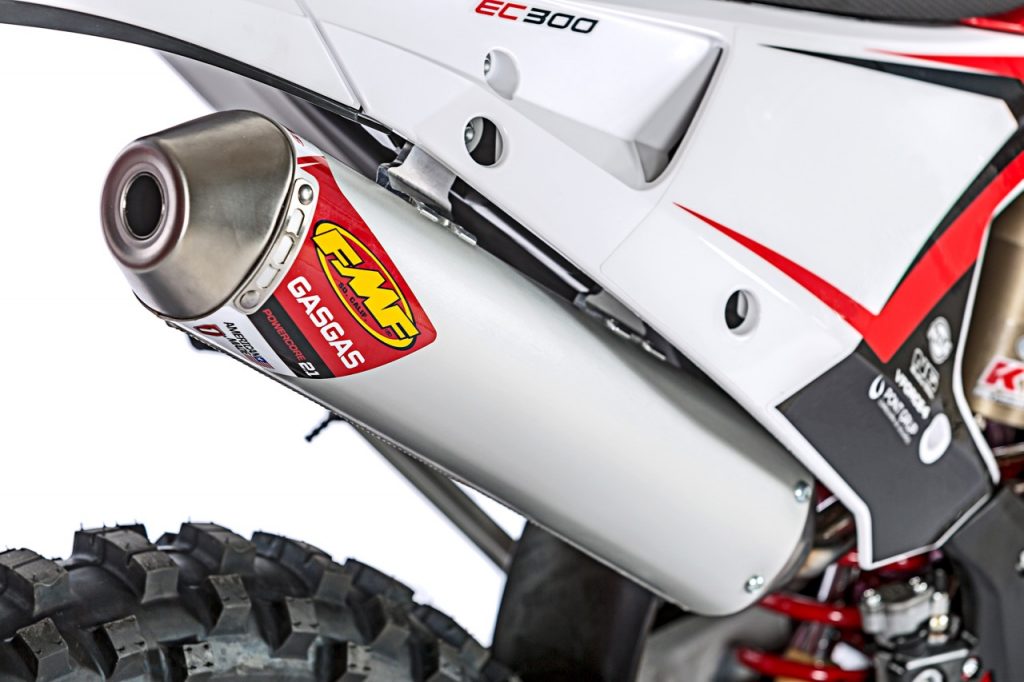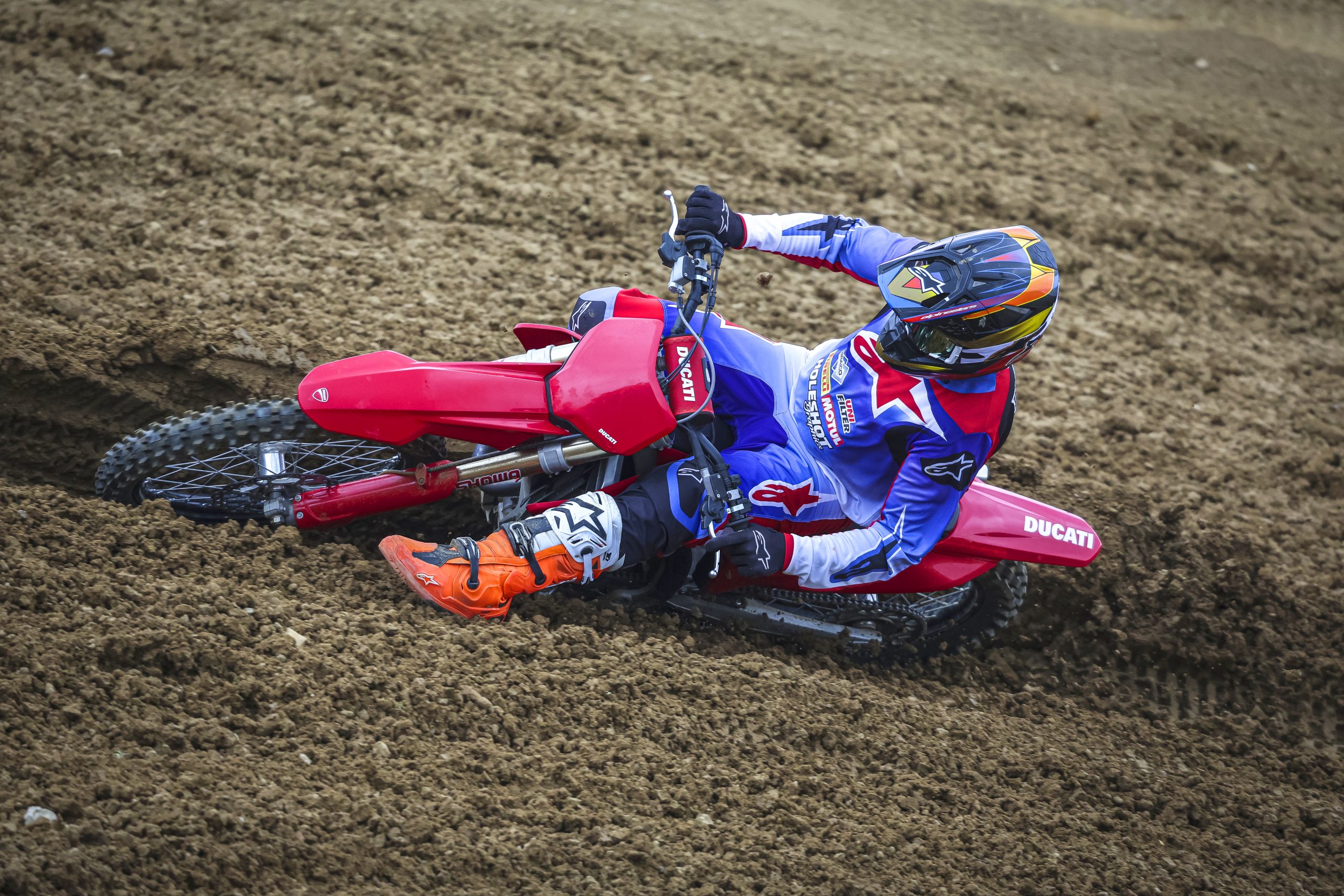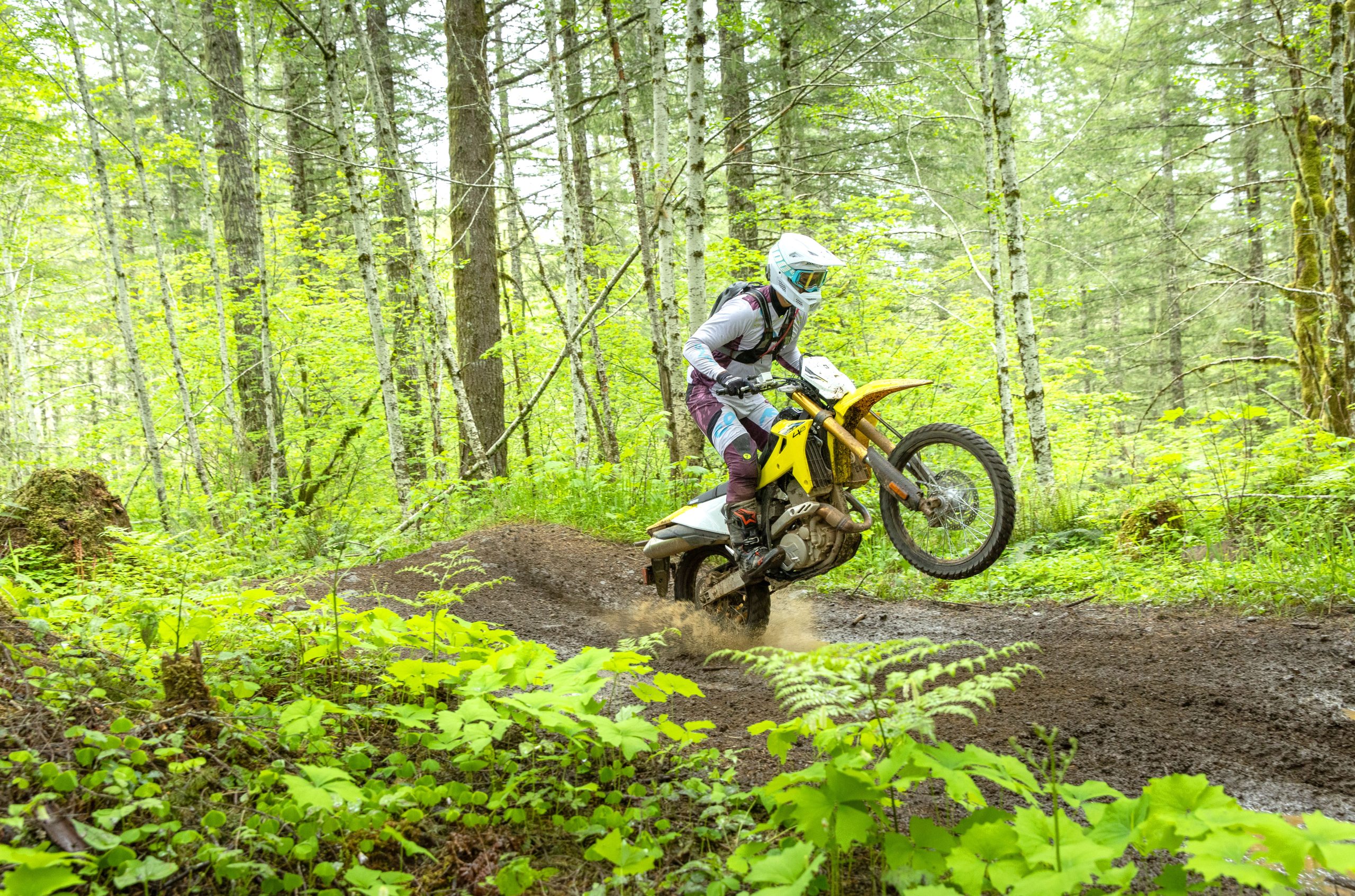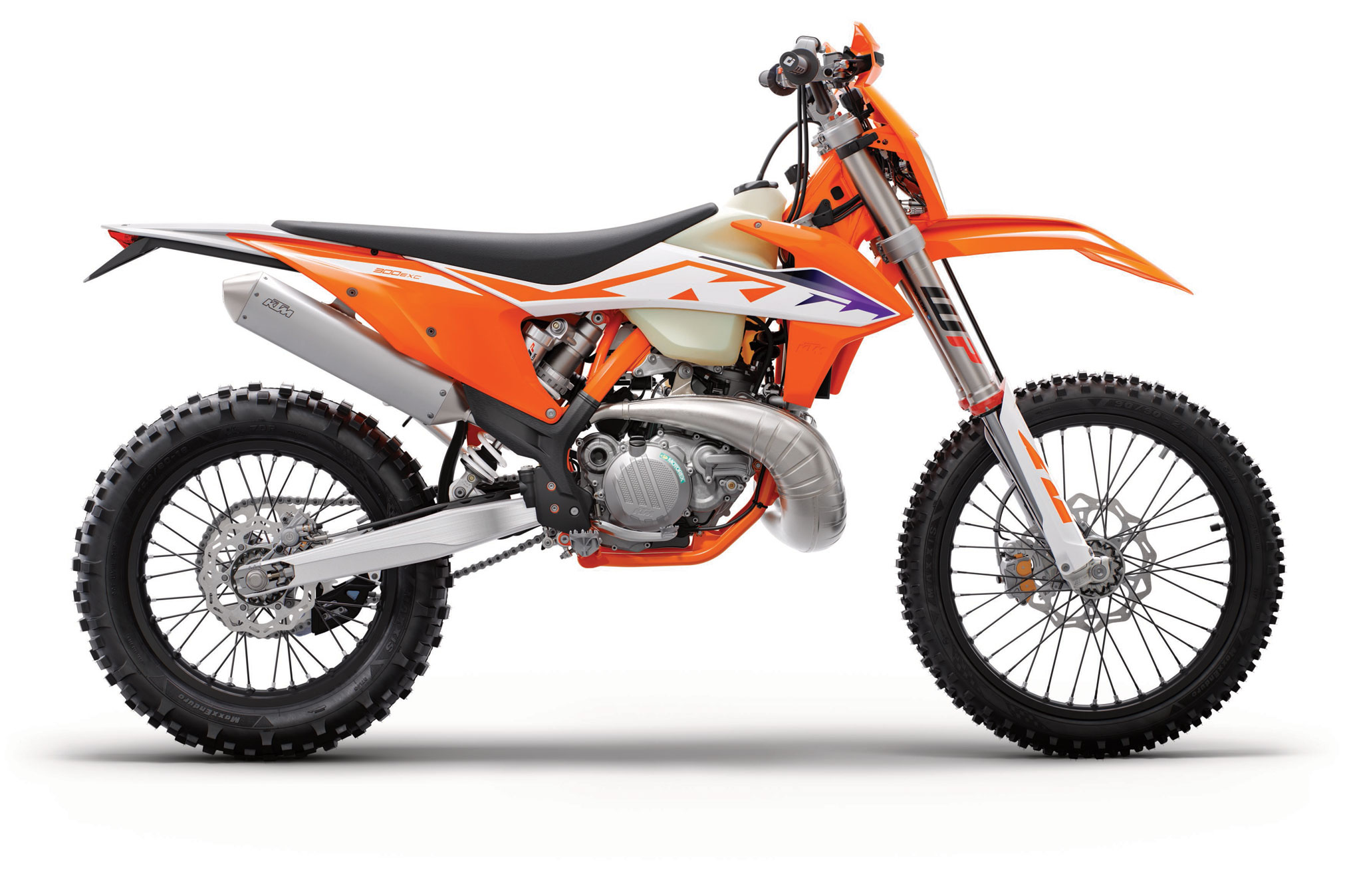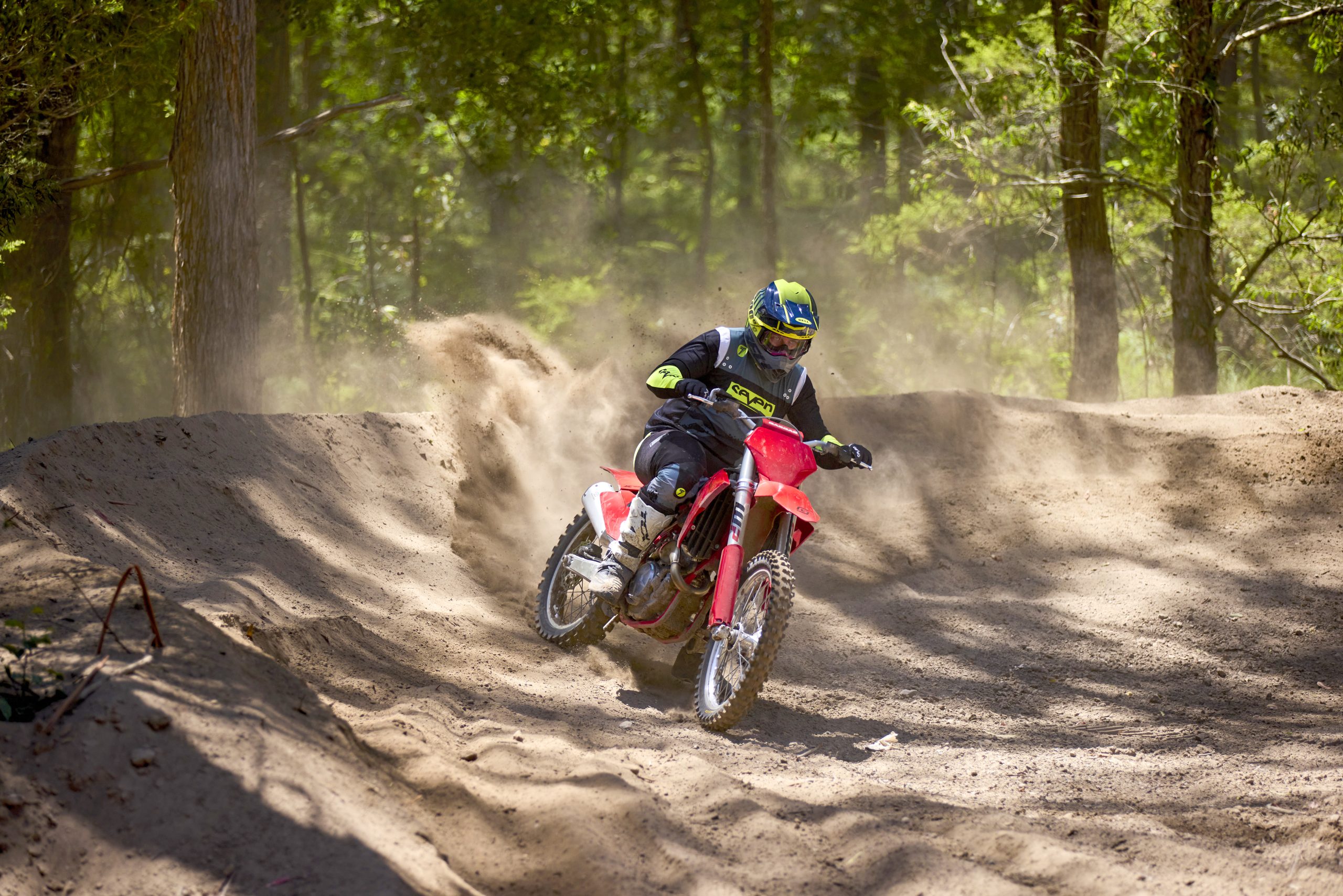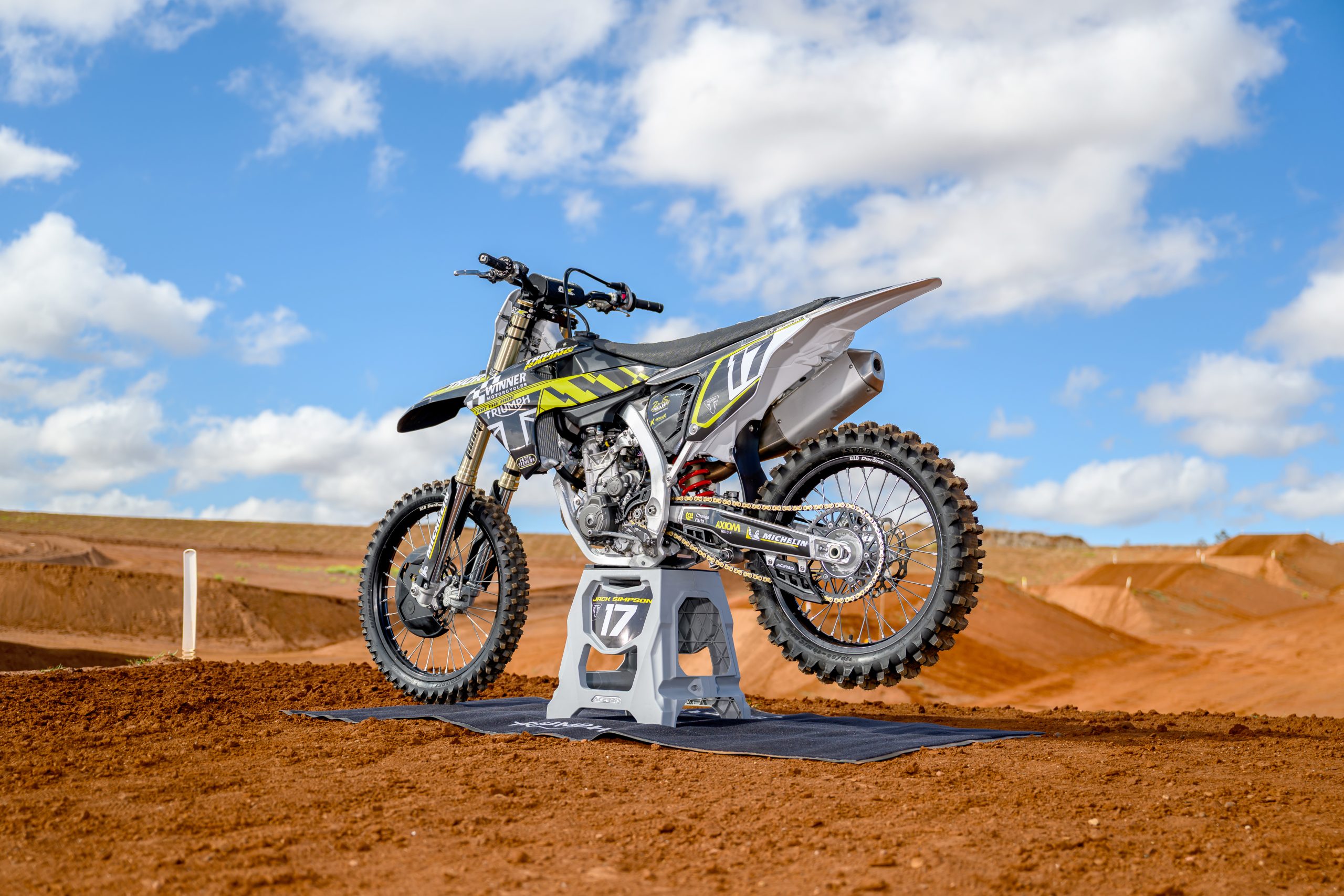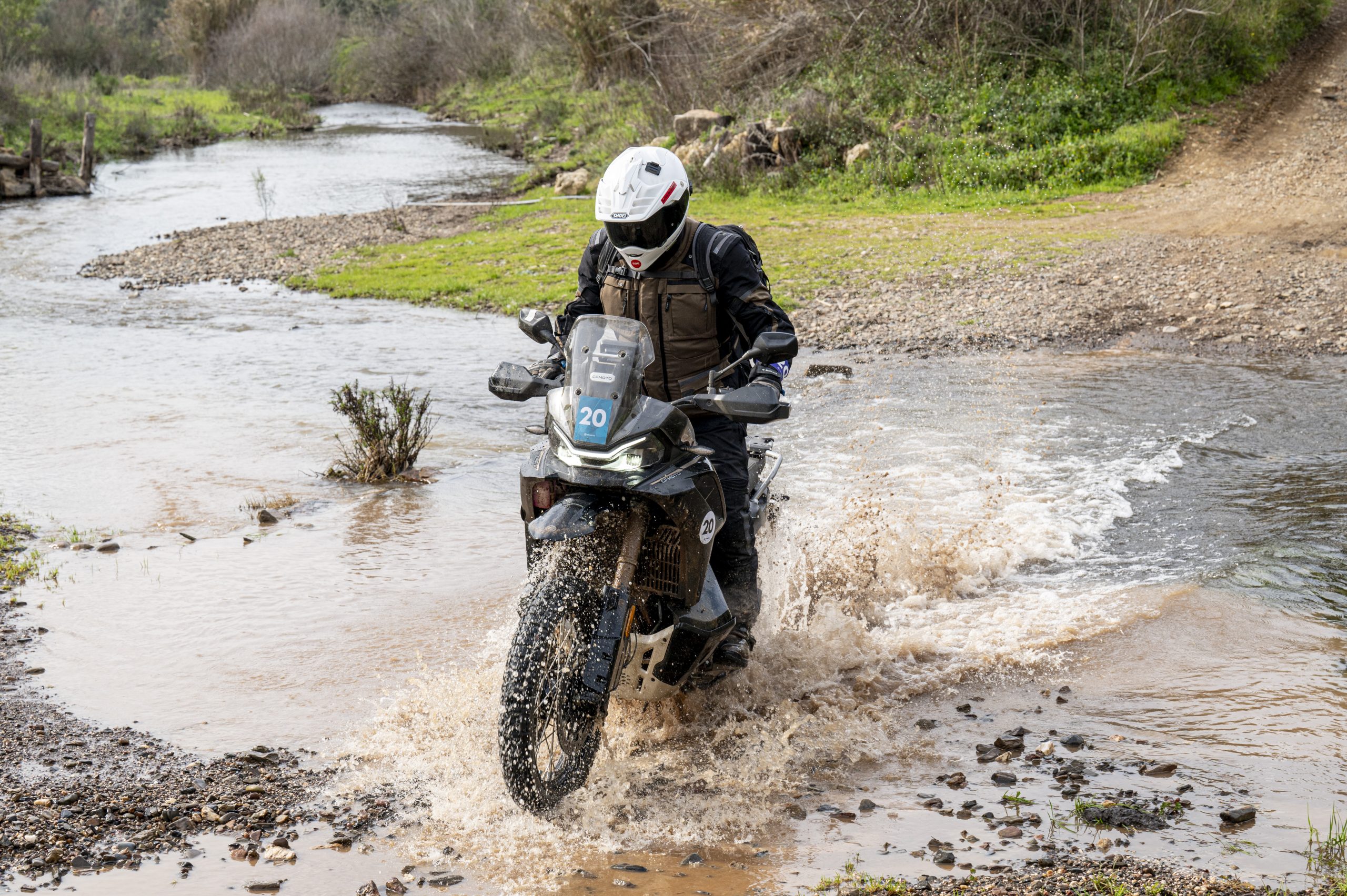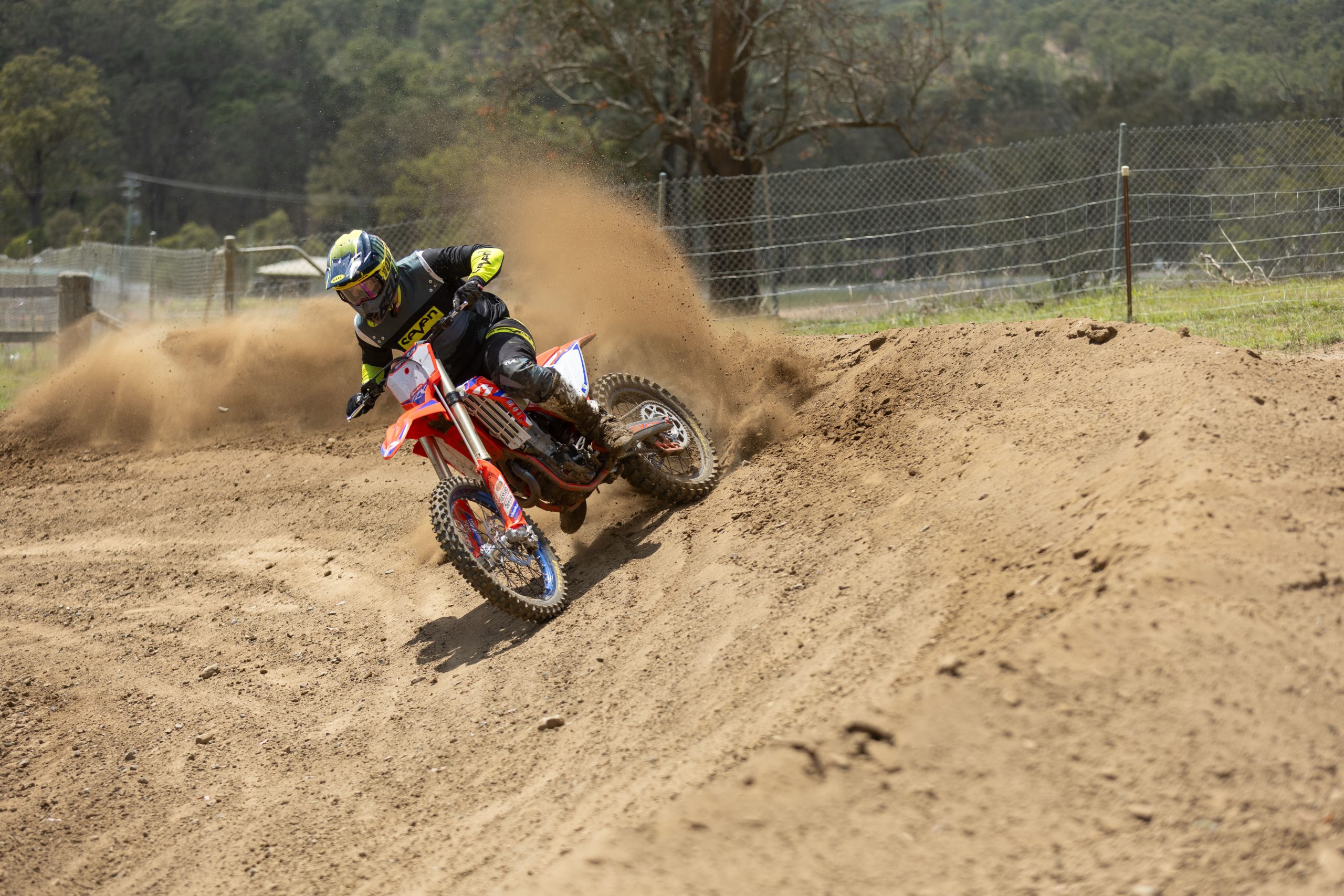WORDS // JONO BENTMAN PHOTOS // GAS GAS
Let’s not beat about the bush, Gas Gas has purposely played down the corridor with its new 2018 EC300 and 250. There’s nothing radical, just tried and tested technology combined with top spec components to make a very efficient, effective racing motorcycle.
Having gone its own way for several years with perimeter frames, Gas Gas has gone back to a central-backbone one, in chrome-moly steel, and made it 20 per cent lighter. The swingarm is new too, this one being 7 per cent lighter. These weight savings contribute significantly to the now superlight 102kg that’s claimed for the XC300 (the EC300 weighs 105kg).
What you’ll notice fairly easily is how the frame and cast swingarm now resemble those of a well-known Austrian brand, particularly the frame’s shock-mounting crossbrace. This is no bad thing – especially following such a quality brand.
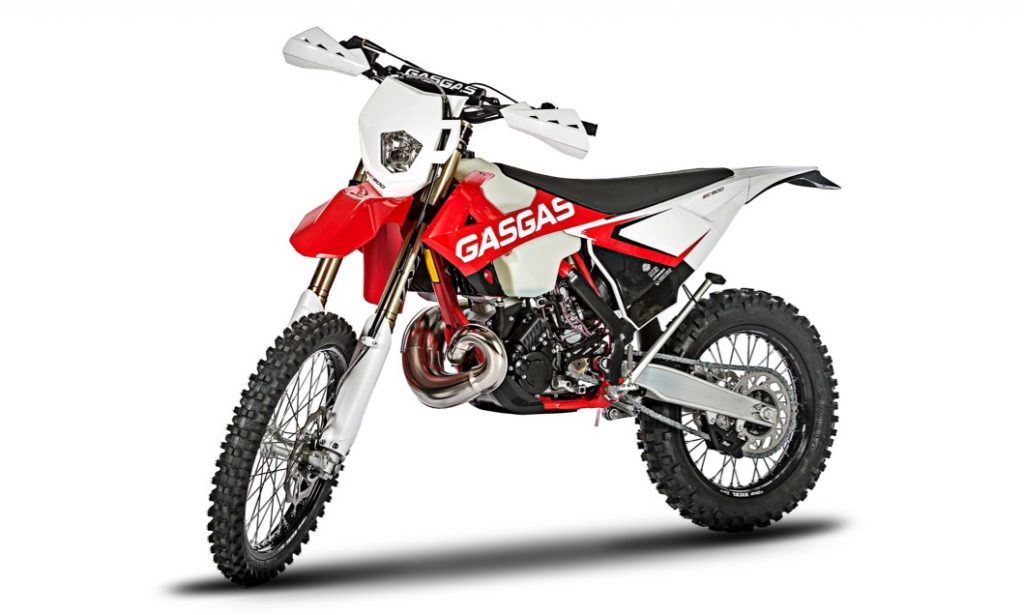
PREMIUM KIT
Kayaba has been helping make Yamaha YZs and WRs great for years. Fitted to the new EC300 is KYB’s cartridge fork, in place of the Marzocchi Shiver.
The EC motor still doesn’t have the underslung starter motor of the two-stroke competition, which would be an expensive exercise, but there’s a new barrel and head to release a sizeable boost in power and torque, right through the rev range.
The EC250 steps up from just over 40 to a full 50hp, while the EC300 has jumped from 45 to 55horses – those are big gains. Without the time or money to develop two-stroke fuel injection to meet Euro 4, this performance will only come in de-restricted, ‘closed-course’ form.
Gas Gas has resorted to fitting a diminutive Dellorto carburettor, a full-on plumber’s nightmare of emissions gear and a tight-arse muffler, all of which are destined for immediate disposal. Full power comes with the fitting of a Keihin PWK38 carb (supplied on purchase) and FMF expansion chamber, just like old times. The XC is full power from the get-go.
Around this engine and chassis Gas Gas has designed a neat layout. There’s new ergonomics with a slimmer but more cavernous translucent fuel tank (10 litres), an agreeably tall and flat saddle, very tidy ‘low profile’ footpegs and a Renthal handlebar. There’s a Spartan simplicity to it all.
Excel rims and Nissin brakes are retained while NG discs replace the Galfers. Oh, and there’s a Magura hydraulic clutch.
THE RIDE
Balanced. That’s the word I used to describe the new EC300 after my first ride, and I was still repeating it after the end of the second and final test. Gas Gas has certainly been able to create a complete package and there’s a sense that the engine and chassis are working in harmony.
The engine does not immediately feel any more powerful than earlier versions. The power is fairly linear and, while there is a powerband, the progression into it is very gradual and controllable. Word is that the gearing is longer and so this probably softens the delivery. There were no detectable holes or glitches in the carburation, and shifting through the neat six-speed gearbox you could really keep the Gas Gas flying along.
The chassis is equally competent and balanced with the front able to seek out corner ruts like a regular pathfinder you could ride with a sense of ease.
The Kayaba suspension also felt well balanced; the bike felt to ride on an even trim front-to-back without excessive dive or squat, and felt to stay mid-to-high in the stroke, leaving plenty in reserve for big impacts. We didn’t have any rocky or woody terrain to see how the suspension would work on short, sharp stuff, so for now we’ll have to hold back on a full evaluation.
The ergos felt good. The bike feels tallish (claimed seat height is 960mm) and the flat seat and lowish handlebar made for a sit-on rather than sit-in feeling. Yet it felt comfortable at that, you can command the bike and the tall feeling to the seat made the standing-to-seating transition feel agreeably short. And again the flat seat and the narrow tank and shrouds meant you could get your weight well forward for the tight turns. And the saddle was firm without being hard, just right.
SUMMARY
It’s an easy bike to like, this new EC300. It’s potent without being wild and will, for sure, make a decent race bike; an even, predictable set of steering and handling responses is something racers (clubman and expert alike) can exploit. The KTM-esque line of development has led to some real-world benefits.
It’s missing some of the niceties that others have brought since Gas Gas exited the market back at the end of 2014. The electric starter is still sitting above the generator, not neatly concealed under the engine the way Sherco pioneered, it’s missing a mapping switch and in-mould graphics should be standard.
And while we can probably rely on Gas Gas to come up with some very keen pricing that will undercut the opposition, its fair to say this is still a premium product and given the quality of the suspension it has that ready-to-race attitude.
2018 GAS GAS EC300 & XC300 Specs
ENGINE
TYPE Power-valve, V-Force 4 reed-valve
DISPLACEMENT 299.3cc (249.3cc)
BORE X STROKE 72 x 72mm (64 x 72)
COOLING Liquid
COMPRESSION RATIO N/A
FUELLING Keihin PWK38
TANK CAPACITY 10L
TRANSMISSON Six-speed, constant-mesh
CLUTCH Wet multi-plate, hydraulic lever
DIMENSIONS
WHEELBASE 1480mm
SEAT HEIGHT 960mm
GROUND CLEARANCE N/A
WEIGHT (dry, claimed) 105/102kg
SUSPENSION
FRONT KYB 48mm closed-cartridge, 300mm travel
REAR KYB monoshock, 331mm travel
BRAKES
FRONT Nissin twin-piston, NG 260mm wave
REAR Nissin single-piston, NG 220mm wave
RUNNING GEAR
HANDLEBAR Double Force tapered
FRONT TYRE Metzeler Six Days 90/90×21
REAR TYRE Metzeler Six Days 120/80×18
CONTACT
Website: www.gasgasmotorcycles.com.au
